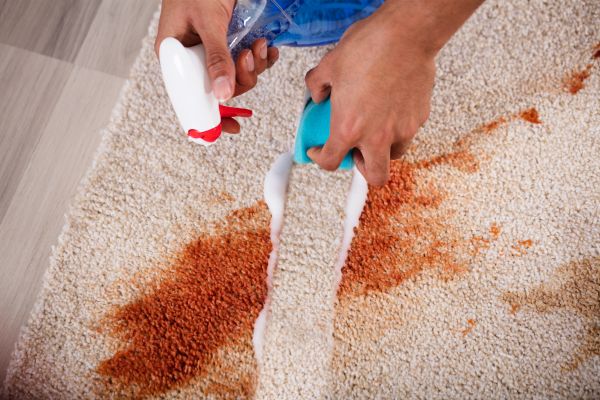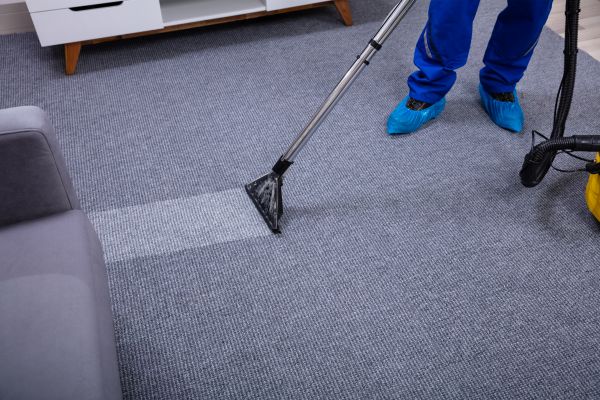Carpets serve as not only cozy floor coverings but also as magnets for dirt, dust, and stains. Maintaining clean carpets is a challenge that homeowners and businesses face daily. In this comprehensive guide, we’ll delve into the science-backed strategies that can help you achieve impeccably clean carpets. From the chemistry behind different cleaning agents to the mechanisms of carpet cleaning machines, we’ll uncover the secrets to keeping your carpets pristine.
1. The Science Behind Carpet Dirt and Stains
Carpets play a dual role as both soft surfaces and filters. They trap not only dirt and dust but also allergens, pet dander, and more. The complex composition of carpets allows them to capture particles that settle deep within the fibers. Understanding this science is crucial for effective cleaning. The types of dirt found in carpets include dry soils, oils, and sticky residues, each requiring a tailored approach for removal.
2. Understanding Carpet Fibers and Their Response to Cleaning Agents
The diversity of carpet fibers—nylon, polyester, wool, and more—means that different materials require different care. Each fiber type has a unique chemical composition that influences how it reacts to cleaning agents. Choosing the right cleaning solution based on the fiber type can prevent damage and optimize cleaning efficiency.
3. pH Balance: The Key to Effective Carpet Cleaning
The pH levels of cleaning agents significantly impact their effectiveness. Different stains and contaminants respond differently to acidic and alkaline solutions. Understanding this balance and selecting pH-neutral or appropriate pH-level cleaning products is crucial for successful stain and dirt removal.
4. The Role of Enzymes in Carpet Stain Removal
Enzymatic cleaners harness the power of natural biological processes to break down organic stains. Enzymes are protein molecules that act as catalysts, accelerating the breakdown of complex stains into simpler components. For instance, protease enzymes target protein-based stains like food spills, while amylase enzymes tackle carbohydrate-based stains. This enzymatic action results in thorough and effective stain removal.
5. Heat and Its Impact on Carpet Cleaning
Heat plays a pivotal role in loosening dirt and stains from carpet fibers. Elevated temperatures enhance the activity of cleaning agents and improve their ability to break down grime. Steam cleaning, for example, utilizes heat to lift dirt and kill germs. However, caution is required to avoid damaging delicate fibers with excessive heat.
6. Mechanisms of Carpet Cleaning Machines
Various carpet cleaning machines, such as steam cleaners and dry vacuums, employ distinct mechanisms to dislodge and remove dirt. Steam cleaners use high-temperature water vapor to break down stains and sanitize carpets, while dry vacuums rely on suction and rotating brushes to lift debris. Understanding how these machines work aids in selecting the most suitable method for your carpets.
7. DIY vs. Professional Carpet Cleaning: Scientific Analysis
While DIY cleaning methods are common, professional carpet cleaning services offer scientifically proven advantages. Professionals possess advanced equipment, such as truck-mounted steam cleaners, that deliver superior results. Their expertise in assessing carpet type and condition ensures optimal cleaning without causing damage.
8. Eco-Friendly Carpet Cleaning: Benefits and Science
Traditional carpet cleaning chemicals can have negative environmental impacts. Eco-friendly alternatives harness the natural cleaning properties of ingredients like baking soda, vinegar, and citrus extracts. These ingredients break down stains without leaving harmful residues, making them safer for both your carpets and the environment.
9. Preventive Measures: The Science of Prolonging Carpet Cleanliness
Preventing dirt and stains from accumulating is key to maintaining clean carpets. Regular vacuuming prevents particles from settling deeply, entrance mats reduce the influx of outdoor debris, and implementing a no-shoe policy minimizes dirt tracking. Understanding the science behind these preventive measures underscores their importance in preserving the cleanliness and longevity of your carpets.
Conclusion
Achieving immaculate carpets requires more than just superficial cleaning. By understanding the science behind dirt, stains, fibers, pH balance, enzymes, heat, and cleaning mechanisms, you’re equipped to make informed decisions about how to effectively clean and maintain your carpets. Embrace eco-friendly solutions and consider professional cleaning for deep restoration. With these science-backed strategies, your carpets can remain not only cozy but also remarkably clean and hygienic.











